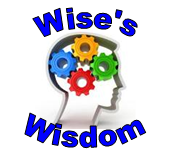Brain research is getting better everyday. And as a result, we are discovering more and more about brain development and student learning. My selection this week tackles some common myths about learning and what the latest brain research from Princeton University is telling us.
"The human brain—a biological organ that weighs about 3 pounds—develops as a result of a combination of the genetic program children inherit from both of their parents. Out of about 70 watts of power, the human brain uses only about 15—similar to what an idling laptop or the light inside a refrigerator use.
The typical 8-year-old child uses about half of his or her body’s energy to run the brain. It is an efficient device, but one that uses a lot of energy, said Sam Wang, an associate professor of neuroscience in Princeton University’s Department of Molecular Biology. Wang, also of the Princeton Neuroscience Institute, has co-authored two books about the human brain."
This research examines the following "educational" myths:
Myth 1: ADHD isn’t real, or conversely is permanent.
Myth 2: “Redshirting” kindergarteners is, on average, good for child’s mental development.
Myth 3: IQ is the biggest predictor of student achievement.
Myth 4: Learning styles are a good way to guide teaching practice.
Myth 5: Autism is on the rise and is strongly affected by environmental influence.
What Schools Can Learn from Marissa Mayer
As you know, Innovative Teaching Strategies are highlighted in our district's CIP this year. My selection this week highlights Marissa Mayer's Nine Principles of Innovation. Mayer recently left Google to become Yahoo's Chief Executive Officer. Her first principle, Innovation, Not Instant Perfection, illustrates the culture of risk-taking we must foster for our students and teachers.
"What if showing your best is a state of constant evolving, risk-taking, ideating, iterating, and course correcting instead of seeking a state of completion?"
What Schools Can Learn from Marissa Mayer
As you know, Innovative Teaching Strategies are highlighted in our district's CIP this year. My selection this week highlights Marissa Mayer's Nine Principles of Innovation. Mayer recently left Google to become Yahoo's Chief Executive Officer. Her first principle, Innovation, Not Instant Perfection, illustrates the culture of risk-taking we must foster for our students and teachers.
"What if showing your best is a state of constant evolving, risk-taking, ideating, iterating, and course correcting instead of seeking a state of completion?"
What Schools Can Learn from Marissa Mayer
Quick Guide to the Common Core: Key Common Core Expectations Explained – Mathematics
This week’s article, Quick Guide to the Common Core: Key Common Core Expectations Explained – Mathematics, highlights five critical differences between CCSS and current mathematical practices across the US. The message is simple: math success is built on truly understanding a few basic ideas. Changing US math instruction to reflect these differences is not simple.
The author shares that the 8
Mathematical Practices span K-12 and are purposed to develop mathematical
habits of mind. Kathy Kellman says, “The Common Core standards demand a balance between conceptual
understanding (mathematical principles and relationships, or “why”), procedural
fluency (skill in carrying out procedures, or “how”), and application (solving
real-world problems, or “when”).” In Hilliard elementary buildings, we build understanding of what digits
mean (conceptual understanding) before moving to the traditional algorithm
through at least two methods:
‘Exemplars’ rich, problem-solving experiences and Number Talks almost daily. These early learning experiences allow students to reason their way through
difficult problems in advanced math courses because math makes sense, not
because they are following rules to solving the problem.
I highly recommend sharing this article
with teachers who instruct mathematics.
Since we are currently hosting our Projected Based Learning cohort training for 2012-2013, I thought I would focus on embedding even more best instructional practice within this already solid instructional framework. “Six Strategies for Differentiated Instruction in Project-Based Learning” explores differentiation in assessment, daily management, and instruction. This edutopia article shares six practical ways that we can differentiate for our students:
- 1. through team structure
- 2. through reflection and goal-setting
- 3. through mini-lessons
- 4. through voice and choice in products
- 5. through formative assessments
- 6. through a balance of teamwork and individual work
While these considerations certainly apply to Project Based Learning, we know they are not limited to PBL. They are differentiated approaches that should be considered by all teachers, PBL or not, in their daily instruction.
This quick read from Seth Godin is a great reminder of what we are all trying to do. Change is tough to handle, almost as hard as leading. Seth Godin reminds us that the big changes don't always come from announcing a world changing idea from the front page of the newspaper and everyone instantly buys in. It takes more than one person, more than one moment in time. Invest in the experience Godin says. What a great message to repeat with all of the changes, the ILC, Capstone, Course of Study Revision, OTES, 3rd grade reading, and more. These initiatives will not be successful without everyone on the fringe investing in them. It doesn't always take the loudest voice, maybe just the majority.
Have a great start to October.








